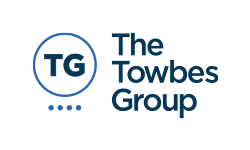A Basic SEO Plan: 6 Steps to Better Rankings
Search Engine Optimization (SEO) can feel overwhelming — and it’s true, there are countless details, tools, and ever-changing rules. While NDIC isn’t a dedicated SEO agency offering full-scale monthly strategies, we do help our clients build a solid SEO foundation through on-page improvements, keyword analysis, and technical recommendations. This article outlines a straightforward, effective SEO plan that we often implement with our clients to strengthen their site’s visibility and performance in search results over time.
Let’s break down the 6-step SEO plan that provides the foundation for long-term growth in search rankings and organic traffic.
Step 1: Research the Right Keywords
Most business owners have a general idea of what people might search to find their services. But assumptions don’t always align with how people actually search online.
For example, if you’re a real estate agent in Ventura, you might assume “ventura real estate” is the top search term. But tools like the Google Keyword Planner might show that “ventura homes for sale” has significantly more search volume.
That’s why keyword research is the essential first step in any SEO strategy. You want to find keywords that meet two important criteria:
-
High search volume: People are actively searching for these terms.
-
Low-to-medium competition: Fewer websites are trying to rank for them, giving you a better shot at visibility.
Using Google’s Keyword Planner, you can generate a list of 6–10 target keywords that are relevant to your business and realistically achievable. These will become the foundation of your SEO efforts.
Step 2: Create a Landing Page for Each Keyword
Once you’ve identified your keywords, the next step is to build a dedicated landing page for each one.
Each page should:
-
Focus on a single keyword or closely related group of terms
-
Include the keyword naturally in the URL, title, headings, and content
-
Provide value to the visitor (not just keyword stuffing)
-
Be structured for easy reading and fast loading
For example, if one of your keywords is “ventura homes for sale,” you might create a page like:yourwebsite.com/ventura-homes-for-sale
Each page should be optimized both for search engines and for real people. That means useful content, clean formatting, and a clear call to action.

Step 3: Build Inbound Links to Your Landing Pages
Search engines see links as votes of confidence. The more high-quality inbound links your landing pages have, the more trustworthy and authoritative they appear in Google’s eyes.
Ways to build links:
-
Get featured on industry directories
-
Share your content on social media or with partners
-
Write guest blog posts and link back to your landing pages
-
Submit your site to local business directories (especially helpful for local SEO)
Not all links are equal — aim for relevant, trusted sources, not spammy link farms.
Step 4: Optimize Every Page’s Meta Tags and Title
Your site’s content is important, but so are the behind-the-scenes details that help Google understand your pages.
Make sure each page has:
-
A unique and keyword-rich meta title (what appears in Google search results)
-
A compelling meta description that encourages clicks
-
Proper use of heading tags (H1, H2, etc.)
-
Descriptive alt text for images
These details may seem small, but they improve click-through rates and tell search engines exactly what your page is about.
Step 5: Track Your Rankings
SEO isn’t a “set it and forget it” strategy. Once your keyword-targeted pages are live, you need to track how they’re performing in search results.
Use tools like:
-
Google Search Console (free) – see how your site appears in search
-
Ahrefs, SEMRush, or Ubersuggest – track keyword rankings and competitor data
Watch how your keywords move up (or down) in the rankings over time. This will help you fine-tune your strategy, test new ideas, and respond to algorithm changes.
Step 6: Monitor Your Website Traffic
Finally, it’s not just about where you rank — it’s about how much traffic you’re getting and how visitors are engaging with your site. Set up Google Analytics to monitor:
-
Overall traffic trends
-
Where visitors are coming from
-
Which pages are performing best
-
How people behave once they land on your site (bounce rate, time on page, conversions)
Tracking traffic helps you tie your SEO efforts to real business outcomes.
Let’s Build a Strong SEO Foundation for Your Website
If you’re looking to strengthen your site’s visibility and lay the groundwork for long-term success, we’re here to help. Whether you need a brand-new website or want to improve SEO on your existing one, just reach out — our team is ready to give you a hand.



































